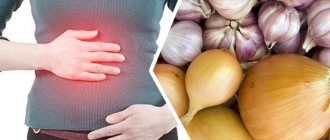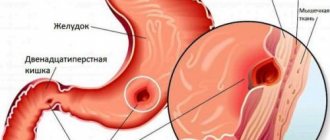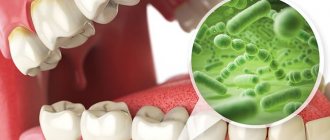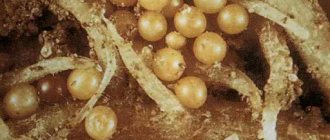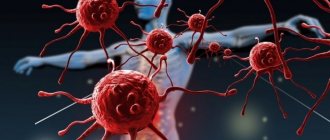What is diarrhea?
Diarrhea is a human condition in which frequent bowel movements are observed, while the stool is watery. This condition is dangerous because it can lead to dehydration. Diarrhea can be caused by infections of the digestive tract, poor diet, stress, and drug poisoning.
The disease can also be caused by the presence of worms or intestinal dysbiosis. It is worth carefully monitoring the frequency of stool, paying attention to its smell (sour, putrid), color (gray, white), and the admixture of blood.
There are several types of stool disorders; to determine them, there are specific characteristics that, in fact, distinguish this symptom from the norm.
Clear criteria and differences between them are given in the table:
The data presented in the table requires a little clarification, since the boundaries of normality and pathology are individual for each person. All generally accepted physiological indicators are averaged, combining a fairly wide spread. First of all, it is worth clarifying the indicator of the number of daily bowel movements. For some people it ranges from once every 2-3 days to 3-4 times a day. The same applies to the consistency of feces, which can be from liquid-mushy to solid-formed.
The most important thing when assessing these characteristics of bowel movements is their duration. If they occur over a long period of time (long months and years), without causing any negative manifestations in a person, then there is no need to worry, since such characteristics are individual. This is not diarrhea.
The situation is completely different with other characteristics of the stool, such as odor and the presence of impurities. Their change always indicates diarrhea. Moreover, from time to time, by their appearance, one can clearly determine its origin. Therefore, it is so important to always pay attention to feces, because they indicate the state of digestion and the health of the body as a whole.
Diarrhea is a pathological symptom that is characterized by an increase in the number of bowel movements or the appearance of liquid stool, which was not observed until a certain point. It is almost always accompanied by the presence of various impurities in the stool.
Causes of diarrhea in adults
Diarrhea is a consequence of improper functioning of the intestinal tract: the digestive process accelerates, and this leads to dilution of stool and frequent bowel movements.
As a rule, diarrhea is caused by viral or bacterial infections or food poisoning. Typically, the causative agents of diarrhea are Escherichia coli and salmonella bacteria; they can be in food or water. Diarrhea, which is caused by a bacterial infection, most often affects tourists when traveling to exotic countries. It’s not for nothing that this type of disease is sometimes called “tourist’s diarrhea.”
Diarrhea can be caused by herpes simplex or hepatitis viruses, as well as taking antibiotics.
Another cause of diarrhea can be ulcerative colitis. It also causes severe diarrhea, but colitis is detected very late and, as a rule, during an internal examination of the intestines.
Considering the close contact of the digestive system with the external environment and internal systems of the body, one can safely notice its persistent dependence on them. That's why she gets sick so often. Most often, any irritation or disruption in normal functioning is manifested by increased motor skills, mucus secretion, and ultimately diarrhea.
A complete list of causes of diarrhea is given below:
Viral infections
- Rotaviruses;
- Enteroviruses;
- Adenovirus;
Bacterial infections
- Salmonellosis;
- Dysentery (shigellosis);
- Cholera;
- Food poisoning;
- Escherichiosis;
Enzyme deficiency
- Pancreatitis;
- Gallstone disease with impaired bile outflow;
- Enzymopathies;
- Congenital intolerance to certain foods;
Intestinal diseases
- Enteritis;
- Enterocolitis;
- Nonspecific ulcerative colitis;
- Crohn's disease;
- Whipple's disease;
Tumor growths
- Polyps;
- Adenocarcinomas;
- Diverticula complicated by inflammation;
Autoimmune diseases
- Intestinal damage due to lupus erythematosus;
- Rheumatoid arthritis;
- Atopic dermatitis and allergic reactions;
Intoxication
- Nitrate poisoning;
- Heavy metals;
- Pesticide;
- Household chemicals;
Drug influences
- Antibiotics;
- Cytostatics;
- Overdose of laxatives;
- Anticholinesterase agents and prokinetics;
Gastrointestinal bleeding
- Open ulcer of the stomach and duodenum;
- Small intestinal bleeding;
- Colonic bleeding;
Diarrhea after taking antibiotics
This is due to the fact that it is caused by iatrogenic (medical) influences, which are initially designed to help a person. They are very common and can cause serious illness and even death. First of all, this concerns the side effects of antibacterial therapy, which causes dysbiosis, and subsequently pseudomembranous colitis. The peculiarity of the latter complication is that it is very difficult to correct by any methods, accompanied by debilitating diarrhea.
No less important are infectious diarrheas of bacterial and viral origin. They occur more often than others, but fortunately, they end well in most cases. This is due to the body's ability to ultimately defeat aggressive pathogens, since they are natural components of nature. The same cannot be said about diarrhea caused by toxic influences and other external influences. They, being unnatural, cannot be overcome only by protective immune mechanisms without outside influence.
As for the mechanisms of diarrhea, they can also be different. Which one is included depends on the cause of the diarrhea. The most typical pathogenetic mechanisms and their corresponding causes are presented in the table.
Usually, with diarrhea, there is not only one mechanism for its implementation. Their combination with the predominance of one over the others is typical.
Six causes of “red diarrhea”
As you know, normal healthy stool is shaped, uniform, soft and has a brown-brown color. Diarrhea, or diarrhea, is an unpleasant condition in itself, but it is not usually a symptom of anything clinically serious. It’s another matter if it’s o or bloody – this is an alarming, and possibly threatening, sign.
Diarrhea occurs when food and liquids move through the intestines too quickly. Without having time to form into a homogeneous mass, digestive products are excreted in liquid form.
Bloody diarrhea is a serious symptom in any case, and the color of the stool can help determine the cause. This article discusses the most likely causes and diagnostic value of some specific shades of stool.
Causes
1. Dysentery. Intestinal inflammation, caused by pathogenic bacteria or protozoal intestinal parasites, can be so severe that the intestinal walls begin to bleed.
2. Red food. Foods that are naturally red in color or contain red food dyes, especially if they are also toxic or irritating. The most common foods of this kind include beets, cranberries, red candy or red icing, licorice, tomatoes and tomato sauce.
3. Gastrointestinal bleeding. It can occur in a number of pathological conditions and conditions, including colonic polyps, ulcerative colitis, stomach cancer, etc. In such cases, blood loss can be quite significant, which leads to the appearance of red diarrhea.
4. Hemorrhoids. Abnormal dilatation and swelling of blood vessels inside the rectum and anus can cause rectal bleeding and red diarrhea.
5. Taking medications. Bloody stool can be a side effect of certain medications that irritate the stomach and cause bloody diarrhea. An example is liquid dosage forms of antibiotics.
6. Anal fissure. In some cases, a non-healing ulcer in the rectal-anal area will also begin to bleed, resulting in small amounts of bright scarlet blood in the stool.
Other unusual chair shades
Abnormal coloration of excrement can be due to various reasons.
1. Black shade. Tarry, black stools or stools with the consistency of coffee grounds may indicate severe gastrointestinal bleeding. Bloody diarrhea acquires its characteristic appearance and color due to the longer passage of masses from the upper gastrointestinal tract. In addition, a similar effect can be caused by consuming licorice syrup or grape juice in large quantities.
2. Green tint. Occurs due to the presence of bile in the stool, or when taking iron-containing foods/supplements (in this case, the stool takes on a dark green tint).
3. Discolored stool. Clay-like, slightly colored stools are often observed with cholelithiasis. If dark urine is noted at the same time, this is another indication of possible problems with the liver or gallbladder. In addition, taking certain antacid medications containing aluminum hydroxide, as well as certain forms of viral hepatitis, can lead to “fading” of the stool.
4. Yellowish, oily-fat stool mixed with mucus is a common symptom of an intestinal infection or serious disorders of the intestinal absorption function (malabsorption syndrome), for example, with celiac disease.
When to ask for help
Since red diarrhea may be one of the early symptoms (or the first manifestation) of a life-threatening condition, you should consult a doctor as soon as possible.
This must be done especially in cases where, in addition to red diarrhea, the following is observed:
- - chills;
- - a tendency to have a loose diet for more than two weeks, or severe diarrhea that lasts more than two days in a row;
- - fainting or fainting, general weakness;
- — temperature above 38 degrees;
- - vomit
- - pain or cramps that progressively worsen over time.
Based on materials from Medical News Today
Types of diarrhea
- Infectious diarrhea
observed with dysentery, salmonellosis, food infections, viral diseases (viral diarrhea), amoebiasis, etc.
- Alimentary diarrhea
occur due to poor nutrition or allergies to any foods.
- Dyspeptic diarrhea
occur when the digestion of food masses is impaired due to secretory insufficiency of the stomach, pancreas, liver, or when there is a lack of secretion of any enzymes by the small intestine.
- Toxic diarrhea
accompanies uremia, mercury and arsenic poisoning.
- Drug-induced diarrhea
occurs when the physiological intestinal flora is suppressed and dysbiosis develops.
- Neurogenic diarrhea
are the result of a violation of the nervous regulation of intestinal motor activity (for example, diarrhea that occurs under the influence of excitement or fear).
Mild and short-lived diarrhea has virtually no effect on the general condition of a person. Severe or chronic - depletes the body, leads to hypovitaminosis, significant changes in organs.
Diarrhea symptoms
Clinical manifestations of diarrhea are usually characterized by a standard set of complaints and objective examination data. For some of its types, there are specific distinctive features that can be used to accurately determine the specific nature of the disease. But it also happens that even additional laboratory and instrumental data do not always turn out to be informative. In order not to miss anything, you need to be very attentive to everything that happens to the body, accompanying diarrhea.
High temperature with diarrhea
It is noted by many patients as an additional symptom. Its development is characteristic of many types of diarrhea. First of all, this concerns microbial (viral and bacterial) types. After all, any penetration of foreign protein structures into immune cells causes the production of antibodies, which is accompanied by the release of inflammatory mediators and a temperature reaction.
How and with what to reduce a high temperature?
Considering that the intestines are one of the most powerful immune organs, its occurrence should not be surprising. On the contrary, when a person has signs of an infectious intestinal disease, but there is no fever, this indicates the presence of immunodeficiency. As for its specific values, they depend on the pathogenicity of the microbe and the reactivity of the body and can range from 37.1°C to above 39°C.
Nausea and vomiting with diarrhea
Nausea is by far the most common symptom of diarrhea of any origin. There is a logical explanation for this. After all, disruption of the normal movement of food and feces through the intestines necessarily leads to their incorrect reflux in the opposite direction.
In addition, intoxication that occurs against the background of any intestinal catastrophe necessarily leads to the absorption of these toxic products into the systemic bloodstream with their distribution to all organs and tissues. The first to react to them is the vomiting center of the brain, which clinically manifests itself in the form of nausea followed by vomiting. By the way, the last reflex act is one of the most physiological mechanisms for cleansing the body of toxins of any origin.
Abdominal pain
It is always a consequence of increased intestinal motility. As a rule, it is spastic, strong and intense. It is characterized by a paroxysmal course with periods of sharp intensification with gradual subsidence and complete cessation. Usually after or during a painful attack there is a urge to defecate, which is manifested by severe diarrhea.
The appearance of pain is characteristic of almost all types of diarrhea, but most often occurs with microbial types and food poisoning. All other types of it are accompanied by discomfort and a feeling of heaviness in the stomach.
Rotten belching with diarrhea
It occurs as a primary symptom or gradually against the background of diarrhea. In the first case, when it precedes diarrhea, its appearance indicates enzymatic insufficiency of the pancreas, stomach and biliary system.
As a result of the fact that the food entering the body is not digested, it rots. This eventually vents into the formation of foul-smelling gases, which emanate from the stomach through belching. Naturally, undigested particles entering the intestines cause irritation and diarrhea. When rotten belching occurs against the background of diarrhea, this is a consequence of secondary digestive disorders caused by the underlying disease and indicates its progression.
Clinical manifestations
Diarrhea can be acute or chronic. Acute - lasting up to 3 weeks, chronic from 3 weeks or longer. Loose stools are usually accompanied by other signs of digestive disorders:
- bloating;
- flatulence;
- stomach ache;
- tenesmus;
- nausea;
- vomit;
- an admixture of blood, pus or mucus in the stool;
- temperature increase;
- weakness, lethargy.
Often, profuse, frequent, loose stools appear in the presence of infection or poisoning. In this case, chills, weakness, and increased body temperature are often noted. Chronic diarrhea accompanies organic diseases of the digestive system and may be accompanied by abdominal pain, jaundice, and an unpleasant taste in the mouth.
An experienced gastroenterologist at the Yauza Clinical Hospital will make a preliminary diagnosis at the first appointment and prescribe the necessary tests and studies. An individual approach and well-coordinated work of the center allow patients to undergo an express examination within 1-2 days.
Color of diarrhea in an adult
Color:
- Green color
- Yellow
- Black color
- White color
- Diarrhea with blood
- Diarrhea with mucus
- Water diarrhea
An experienced clinician can determine the origin of diarrhea by the color and typical characteristics of liquid stool. In this case, it is necessary to add up the remaining symptoms. This will make it possible to understand and clarify some details of the origin of the true culprit of diarrhea.
Green diarrhea
Characteristic exclusively for bacterial and viral intestinal lesions. The appearance of greenery is associated with the direct accumulation of leukocytes in the feces, as well as the active proliferation of pyogenic coccal flora (staphylococci) against the background of weakened local immune mechanisms in the intestines.
Clinically, it looks like liquid stool of heterogeneous consistency with small greenish inclusions or thickly coated and mixed with viscous green mucus. Typically, such diarrhea is accompanied by a severe hyperthermic reaction, abdominal pain, nausea and vomiting, signs of severe intoxication and inflammatory changes in the blood system.
More details:
Green feces - what does it mean?
Yellow diarrhea
It is one of its most favorable types, since most often it is caused by increased peristalsis (contraction) of the intestine. As a result of the acceleration of the movement of feces, they do not have time to fully form into a normal shape and consistency. But at the same time, they undergo almost complete enzymatic processing and partial absorption of the active components into the bloodstream. The result is stool of normal color, but liquid consistency. Characteristically, there are no additional symptoms except for minor pain and heaviness in the abdomen.
More details:
Yellow stool - what does it mean?
Black diarrhea (dark in color)
Refers to very formidable or, conversely, natural symptoms. First of all, it’s worth focusing on it as a threatening sign. The appearance of stool that is black, like tar or tar, can indicate only one thing - bleeding from the stomach. The appearance of this particular color is due to the destruction of erythrocyte hemoglobin under the influence of hydrochloric acid of the stomach. In this case, hydrochloric acid hematin is formed, which provides the characteristic color. In such situations, you should not waste a minute and urgently seek medical help.
The second situation that may result in black feces is the consumption of foods based on animal blood (bloodweed), large amounts of beets, blueberries, or certain medications (activated carbon, bismuth preparations - Vikalin, de-Nol). It is this fact that often causes people to seek medical help. A differential diagnostic criterion for the origin of black diarrhea is the presence of an appropriate history of use of the listed substances or a decrease in hemodynamic parameters (hypotension, tachycardia) in the case of gastrointestinal bleeding.
More details:
Black feces - what does it mean?
White diarrhea (light in color)
Along with black feces, it is one of the most specific, characterizing only one reason for its appearance. In this case, it is insufficient processing of food masses in the intestines with bile. This is possible when the common bile duct is compressed or blocked by a tumor or stone.
In typical cases, such diarrhea is necessarily accompanied by yellowness of the skin and severe darkening of the urine. Pain, temperature reaction and dehydration are not typical. It is often of a mild nature, occurring only a few times, after which the white color of the stool remains with its normal consistency.
Diarrhea with blood
The most dangerous of all types of diarrhea, since it indicates ongoing active bleeding into the cavity of the intestinal tract. Usually characteristic of disintegrating tumors of the large intestine, severe intestinal infections, which result in complete destruction of the mucous membrane of the intestinal wall.
Sometimes the appearance of bloody diarrhea can be a consequence of the toxic effects of various chemical compounds and poisons on the intestines. Bloody diarrhea may not be represented by pure blood, but by liquid, dark cherry-colored stool. In this case, we can say with confidence that the source of bleeding is located in the right half of the large intestine.
Diarrhea with mucus
This characteristic alone cannot determine the true origin of diarrhea. After all, mucus can be completely different and released in different quantities. Its transparent appearance is a sign of a relatively favorable course, which may be due to foodborne illness and mild poisoning. When the mucus becomes greenish, brown or bloody, this always indicates severe diarrhea or lack of effect from its treatment.
More details:
White mucus in stool: what does it mean?
Water diarrhea
In any scientific manual or regular women's health magazine, you can find only one answer to the question about watery stools. This is of course cholera. The causative agent of the disease is designed in such a way that when it enters the intestines, it turns on all possible mechanisms of diarrhea, which is manifested by the indomitable release of water instead of feces. The most interesting thing is that the temperature rises extremely rarely. But the number of bowel movements is so large that patients are unable to count them. As a result, severe dehydration occurs, which requires immediate correction through massive infusion therapy.
The effect of drinking red wine on the human microbiome
The human colon is an organ with extremely high enzymatic activity due to the presence of microflora in it. The totality of intestinal microflora, or microbiome, is a unique ecosystem that is subject to changes under the influence of many factors, including diet and intestinal diseases.
Polyphenols, substances of plant origin, are present in the diet of almost every person; they are found in tea, coffee, wine, fruits, vegetables and chocolate in the greatest quantities. During the digestion of food in the small intestine and inclusion in the hepatic-intestinal circulation, the polyphenols released from it undergo virtually no changes, entering the large intestine intact. Here, polyphenol oligomers interact with intestinal microflora. Jung CM et al., and then Rodríguez Vaquero MJ. et al. showed that polyphenols have an anti-inflammatory effect. These substances have antimicrobial activity and, by binding to the membranes of bacterial cells, are able to inhibit their growth and development. Thus, the next challenge for the study was to find out whether these substances are able to make changes in the gut microbiome and work as prebiotics. Scientists from the USA have taken up the solution to this issue.
Methods
The study included 10 healthy men aged 45-50 years. The inclusion condition was, among other things, the absence of antibiotics, probiotics, prebiotics or vitamins in the next 3 months before the start of the study. Next, a randomized prospective study was performed. After a 15-day period of complete abstinence from alcohol, participants sequentially drank red wine with alcohol removed (272 ml/day), red wine with alcohol present (272 ml/day), and gin (100 ml/day) at for 20 days each. Each participant underwent stool PCR tests to determine the DNA of bacteria in the stool. A biochemical blood test was also taken for the level of albumin, glucose, C-reactive protein, lipid spectrum (triglycerides, LDL, total cholesterol); Blood pressure was measured regularly. In the urine after a daily collection, the level of polyphenols was determined, namely resveratol and its metabolites when drinking red wine without alcohol and ethyl glucuronide when drinking regular red wine.
results
The composition of the gut microbiome changed throughout the study. Compared with the initial period in which alcohol intake was excluded, wine intake led to a significant increase in the number of bacteria of the groups Enterococcus, Prevotella, Bacteroides, Bifidobacterium, Bacteroides uniformis, Eggerthella lenta, and Blautia coccoides–Eubacterium rectale (P
Conclusion
The study demonstrated an association between red wine consumption and positive changes in the composition of the gut microbiome. The difference in cell wall composition explains the greater sensitivity of gram-positive bacteria of the Clostridia group compared to gram-negative Prevotella and Bacteroides. A marked decrease in the number of Clostridium histolyticum bacteria when drinking red wine and the absence of such an effect from drinking gin indicates the suppression of bacterial growth by wine polyphenols. Taking into account the data obtained, wine, when consumed regularly in small quantities, can help maintain normal intestinal microflora and be considered as a prebiotic.
Source: M.-I. Queipo-Ortuño et al. Influence of red wine polyphenols and ethanol on the gut microbiota ecology and biochemical biomarkers. Am J Clin Nutr June 2012 vol. 95 no. 6 1323-1334
Treatment of diarrhea in adults
Only those who can clearly determine its nature and mechanism of occurrence can treat diarrhea correctly and effectively. The table below should help you navigate these issues a little.
Treatment of diarrhea should not be a one-component treatment. It is necessary to correctly combine different drugs, focusing on the group of drugs that influence the cause of its occurrence.
| Type of diarrhea | Basic groups of drugs |
| Infectious |
|
| Enzymatic | Replacement therapy with enzyme preparations |
| Intestinal diseases |
|
| Bleeding |
|
| Intoxication |
|
| Diarrhea after antibiotics |
|
Diagnostics
Our clinic has all the capabilities for diagnosing and treating gastroenterological diseases. Among them:
- An extensive base for laboratory research - serological and enzyme immunoassays for all types of infections, specific markers, tumor markers, allergy diagnosis, general clinical analysis of blood, urine, coprogram, stool examination for disgroup, for worm eggs.
- Complete and modern endoscopic diagnostics of the gastrointestinal tract, including endoscopy in monochrome light, tissue sampling for cytological examination (biopsy)
- Ultrasound, fibroelastography of the liver.
- Plain radiography of the abdominal cavity.
- In the medical center, on a modern tomograph, you can undergo a virtual colonoscopy, examination of the small intestine using computer and magnetic resonance imaging using modern diagnostic equipment.
- According to indications, in the center you can undergo additional consultations with a coloproctologist, psychiatrist, surgeon, or oncologist.
